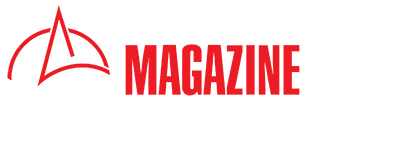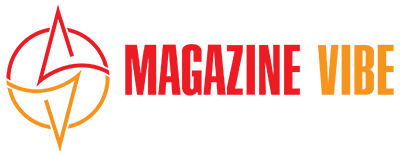Introduction to Clochant
Clochant refers to a specific concept or term used within a particular industry or field. Understanding clochant helps professionals and enthusiasts gain insights into relevant practices and methodologies. The importance of clochant in its field lies in its application and influence, shaping how tasks are approached and goals are achieved. This makes it a valuable area of knowledge for those involved, offering benefits that enhance both efficiency and outcomes.
Historical Background of Clochant
The origins and evolution of clochant trace back to foundational ideas or innovations within its industry. This development reflects changes and advancements over time, adapting to new technologies or methodologies. Key figures or entities involved in the development of clochant have played pivotal roles. Their contributions have defined the trajectory and current understanding of clochant, making it an integral part of its field. These individuals or organizations are often celebrated for their pioneering work and lasting impact on the practices clochant influences.
Definition and Explanation of Clochant
Clochant is a term that describes a specific method or tool within its industry, focusing on a particular aspect of operations or management. It involves techniques or processes that are crucial for achieving desired outcomes efficiently and effectively.
In its relevant industry, clochant is used to streamline processes, enhance productivity, or improve quality. Its application varies depending on the sector, but it generally supports professionals in maintaining high standards and adapting to changing environments or requirements. The use of clochant is therefore seen as an essential skill or resource that adds significant value to industry practices.
Types or Categories of Clochant
There are several types or variations of clochant, each designed to meet specific needs within its industry. These types can be broadly categorized based on their application or the methodologies they employ.
-
Type One Clochant:
- Features: Focuses on precision and accuracy.
- Characteristics: Utilized in scenarios where meticulous detail is crucial for success.
-
Type Two Clochant:
- Features: Geared towards speed and efficiency.
- Characteristics: Best for high-paced environments where time is a limiting factor.
-
Type Three Clochant:
- Features: Integrates technology for enhanced performance.
- Characteristics: Involves the use of advanced tools and software to augment traditional methods.
Significance of Clochant
The importance of clochant within its industry cannot be overstated. It plays a critical role in setting standards and ensuring that operations are carried out with high efficiency and effectiveness. Clochant serves as a cornerstone for best practices, influencing both strategic and day-to-day activities.
Impact on practices: Clochant introduces innovative methods and technologies that revolutionize traditional practices, making them more aligned with contemporary needs and challenges.
Impact on efficiency: By implementing clochant, organizations can optimize their workflows, reduce waste, and achieve more in less time, leading to significant improvements in operational efficiency.
Impact on outcomes: The use of clochant often results in enhanced quality of products or services, higher customer satisfaction, and stronger competitive advantage. It enables industries to not only meet but exceed their objectives, delivering outstanding results consistently.
Contemporary Applications of Clochant
Clochant is currently used across various sectors within its industry to enhance performance and achieve strategic goals. Its applications are diverse, adapting to the evolving needs and technological advancements of the modern workplace.
Current uses:
- Process Optimization: Clochant methods are applied to streamline operations, reduce redundancy, and optimize resource allocation.
- Quality Control: It is used to ensure products or services meet rigorous quality standards, incorporating continuous improvement practices.
- Innovation and Development: Clochant drives innovation by fostering an environment that encourages the exploration of new ideas and solutions.
Examples of modern implementation:
- Tech Integration: In tech industries, clochant may be integrated with AI and machine learning algorithms to predict trends and automate complex processes.
- Healthcare Applications: In healthcare, clochant could be employed in patient data management systems to improve the accuracy and speed of service delivery.
- Manufacturing: In manufacturing, clochant is often seen in the automation of assembly lines and real-time monitoring systems to enhance production efficiency.
Future Trends of Clochant
Emerging trends involving clochant reflect the continuous evolution of technology and methodologies within its industry. These trends are set to shape the future landscape, making clochant an even more integral part of professional practices.
Predictions about its evolution and future relevance include:
-
Integration with Advanced Technologies:
- Clochant methods are expected to increasingly incorporate AI, IoT (Internet of Things), and blockchain technologies to enhance accuracy, security, and efficiency.
-
Sustainability Focus:
- Future clochant applications will likely emphasize sustainability, helping industries reduce environmental impact and embrace greener practices.
-
Customization and Personalization:
- As consumer demands become more specific, clochant will adapt to offer more personalized solutions, particularly in services industries where customer engagement is key.
-
Global Standardization:
- Clochant might evolve into a global standard that dictates industry practices worldwide, ensuring consistency and quality across borders.
Challenges and Controversies of Clochant
Clochant, like any influential concept, faces its share of challenges and controversies within various industries. Addressing these issues is crucial for maintaining the integrity and effectiveness of clochant methodologies.
Common challenges:
- Implementation Costs: The initial setup and training costs associated with clochant can be high, making it difficult for smaller entities to adopt.
- Resistance to Change: There may be significant resistance from within organizations, especially from those accustomed to traditional methods.
- Complexity and Misunderstandings: The complexity of clochant systems can lead to misunderstandings or misapplications, potentially causing more harm than good.
Controversies:
- Data Privacy: As clochant often involves the collection and analysis of large volumes of data, it raises concerns about privacy and data protection.
- Depersonalization: In service industries, over-reliance on clochant can lead to depersonalization of customer interactions, which might affect customer satisfaction.
- Job Displacement: The automation aspects of clochant could lead to job displacements, sparking debates about the ethical implications of such technologies.
How these are addressed:
- Education and Training: Continuous education and training programs are implemented to ensure all stakeholders understand the value and operation of clochant systems.
- Policy Development: Developing comprehensive policies that address data privacy and ethical concerns can help mitigate some of the controversies associated with clochant.
- Balanced Integration: Professionals are increasingly seeking ways to integrate clochant in a manner that complements human skills rather than replaces them, focusing on augmentation rather than automation.
Conclusion
Throughout our exploration of clochant, we’ve delved into its essential role across industries, highlighting its varied applications, significant impacts, and the evolution it’s undergoing. As clochant continues to integrate with cutting-edge technologies and adapt to new challenges, its future appears pivotal in driving industry standards and fostering innovation. This ongoing evolution promises to expand its influence, making clochant an indispensable element in shaping the landscapes of various fields.
FAQs
Q. What is clochant?
Clochant refers to specific methods or tools within an industry that focus on enhancing operational efficiency and effectiveness. It is used to improve processes, maintain high quality standards, and foster innovation within professional practices.
Q. Who uses clochant?
Professionals across various industries use clochant to streamline workflows, ensure product or service quality, and drive innovative solutions. It is particularly valuable in fields that require precision, efficiency, and adaptability.
Q. Why is clochant important?
Clochant is crucial because it helps organizations achieve better outcomes through improved efficiency and quality. It supports the adoption of new technologies and methodologies, making industries more competitive and responsive to changes.
Q. How is clochant implemented?
Implementation of clochant involves integrating specific techniques or technologies into existing systems. This can include training sessions for staff, updating equipment, and revising operational protocols to include new clochant-based practices.
Q. What are the challenges associated with clochant?
Challenges include high implementation costs, resistance to change within organizations, and the complexity of new systems. Ethical concerns such as data privacy and potential job displacement also pose significant challenges.
Q. How is clochant evolving?
Clochant is evolving through increased integration with technologies like AI and IoT, which enhance its applications. It is also moving towards more sustainable practices and global standardization to meet the needs of a diverse, global market.
Q. What does the future hold for clochant?
The future of clochant looks promising, with potential to significantly influence how industries operate. Its integration with emerging technologies and adaptation to global standards and sustainable practices will likely enhance its relevance and impact.


